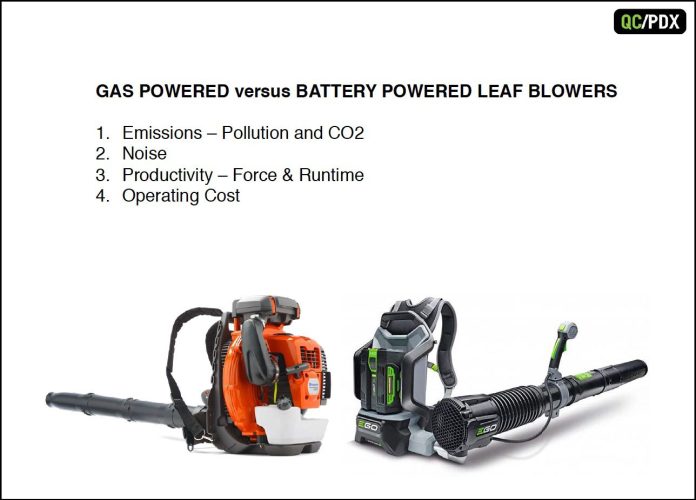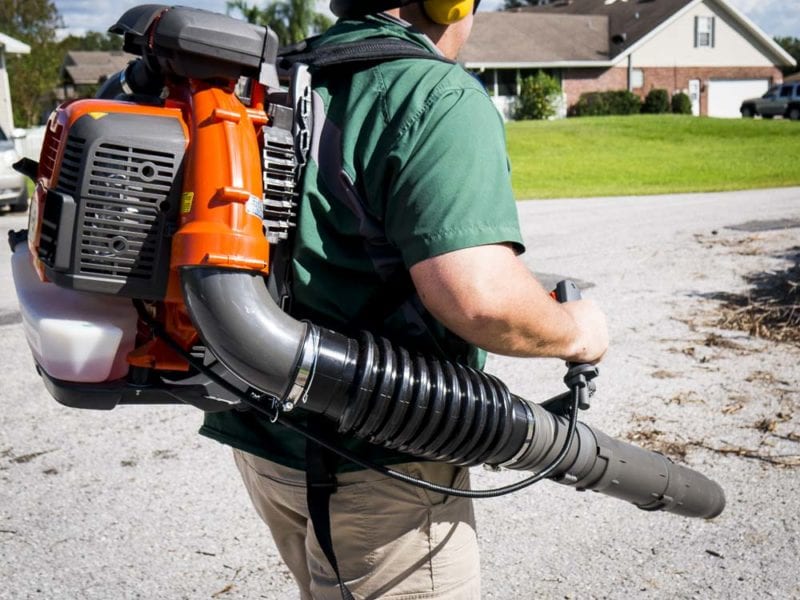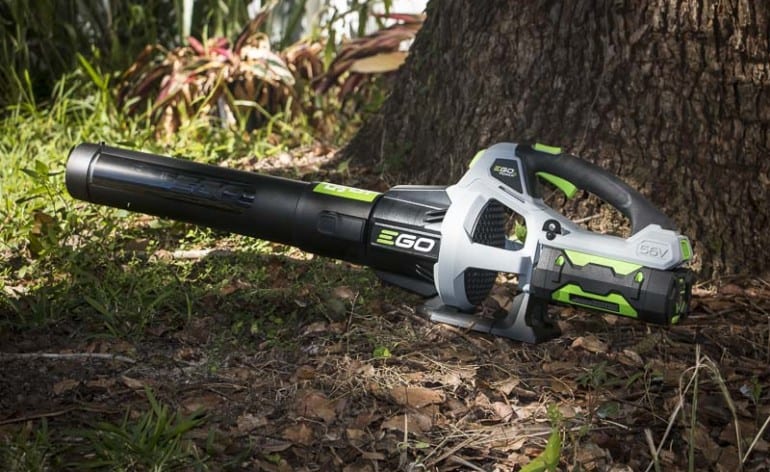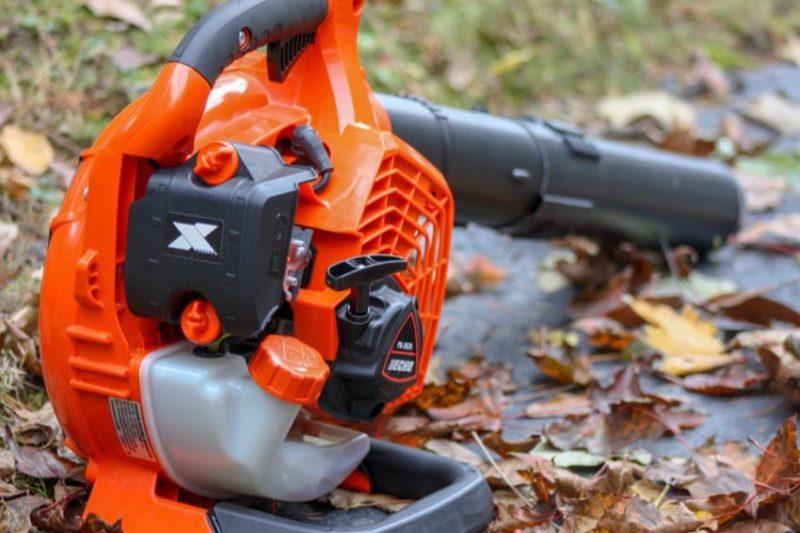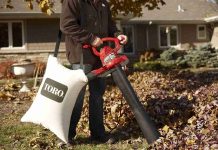Are gas powered leaf blowers truly more powerful than their electric counterparts? This age-old question has plagued many homeowners and landscapers alike. As we embark on a journey to unearth the truth, we will delve into the inner workings of these machines and explore the reasons why gas powered leaf blowers often garner a reputation for being the heavyweight champions of the leaf blowing world. Prepare to be amazed as we uncover the secrets behind their superior strength and determine once and for all if gas powered leaf blowers truly reign supreme in the battle against unruly foliage.
Gas Powered Leaf Blowers vs. Other Types
When it comes to choosing a leaf blower, there are several options available in the market. Two popular alternatives to gas powered leaf blowers are electric leaf blowers and battery-powered leaf blowers. While each type has its own advantages, in this article, we will explore the benefits and drawbacks of gas powered leaf blowers in comparison to these alternatives.
Electric Leaf Blowers
Electric leaf blowers are powered by electricity, either through a cord that needs to be plugged into an outlet or a rechargeable battery pack. These leaf blowers are generally quieter than their gas counterparts and do not emit any exhaust fumes. They are also easier to maintain as there is no need for fuel and oil mixing or spark plug maintenance. However, one major drawback of electric leaf blowers is their limited power output. They are usually suitable for smaller yards and lighter debris.
Battery-Powered Leaf Blowers
Battery-powered leaf blowers are another option to consider. As the name suggests, these leaf blowers run on a rechargeable battery. They offer the advantage of being cordless, providing more freedom of movement. They are also quieter and produce fewer emissions compared to gas powered leaf blowers. However, battery-powered leaf blowers often have limited run time and may not provide as much power as gas blowers. They are best suited for smaller jobs and areas with less demanding debris.
Advantages of Gas Powered Leaf Blowers
Gas powered leaf blowers have been a popular choice among homeowners and landscaping professionals for many years. Let’s explore the advantages they offer over electric and battery-powered alternatives.
Power Output
When it comes to power output, gas powered leaf blowers are unbeatable. These machines are designed to tackle even the toughest debris, making them ideal for larger yards and heavy-duty tasks. Their powerful engines and higher horsepower allow for efficient and effective clearing of leaves, grass clippings, and other outdoor debris.
Air Speed and Volume
Gas powered leaf blowers are known for their impressive airspeed and volume. They can generate a strong, concentrated airflow that helps move large amounts of leaves and debris quickly. The combination of high cubic feet per minute (CFM) and miles per hour (MPH) ratings allows gas blowers to blow away even wet and heavy materials with ease.
Versatility
One significant advantage of gas powered leaf blowers is their versatility. They can be used for a wide range of applications, from residential use to commercial landscaping. Gas blowers excel at both light-duty tasks like clearing driveways and sidewalks, as well as heavy-duty jobs on larger properties. Whether you’re a homeowner or a professional, a gas powered leaf blower can handle the diverse needs of various environments.
This image is property of www.protoolreviews.com.
Disadvantages of Gas Powered Leaf Blowers
While gas powered leaf blowers offer impressive power and versatility, they also come with a set of disadvantages that need to be considered.
Noise Pollution
One of the main drawbacks of gas powered leaf blowers is the noise they generate. These machines can be quite loud, often exceeding 100 decibels. The noise can be disruptive to both the user and their neighbors. It’s important to be considerate and mindful of noise regulations and any local restrictions when operating a gas blower.
Emissions
Gas powered leaf blowers contribute to air pollution through their emissions. These machines release carbon dioxide (CO2), nitrogen oxides (NOx), and other pollutants into the atmosphere. The emissions can have a negative impact on air quality and contribute to climate change. As more people become aware of environmental concerns, the emissions issue has become a significant drawback for gas blowers.
Maintenance and Upkeep
Unlike electric and battery-powered alternatives, gas powered leaf blowers require regular maintenance and upkeep. This includes fuel and oil mixing, spark plug maintenance, and winterizing. Failure to properly maintain the machine can lead to performance issues and increased emissions. It’s essential to follow the manufacturer’s guidelines and perform routine maintenance to keep the blower in optimal condition.
Power Output of Gas Powered Leaf Blowers
When it comes to power output, gas powered leaf blowers are unmatched in their performance. Let’s dive deeper into the factors that contribute to their superior power.
Engine Types
Gas powered leaf blowers typically feature two-stroke or four-stroke engines. Two-stroke engines are more common and known for their high power-to-weight ratio. They are lighter and easier to handle, making them suitable for residential use. On the other hand, four-stroke engines offer improved fuel efficiency and quieter operation. They are commonly found in professional-grade leaf blowers.
Horsepower
Horsepower is another important factor that determines the power output of a gas powered leaf blower. It refers to the engine’s ability to do work. Higher horsepower ratings indicate a more powerful machine that can handle larger volumes of leaves and debris.
CFM and MPH Ratings
Cubic feet per minute (CFM) and miles per hour (MPH) are two key metrics used to measure the airspeed and volume of leaf blowers. CFM represents the amount of air the blower can move in a minute, while MPH indicates the speed at which the air is expelled. Gas powered leaf blowers often have higher CFM and MPH ratings compared to electric and battery-powered models, allowing for more efficient and effective debris clearing.
This image is property of www.protoolreviews.com.
Air Speed and Volume of Gas Powered Leaf Blowers
The airspeed and volume of gas powered leaf blowers play a crucial role in their performance. Let’s take a closer look at what these metrics mean and how they impact the effectiveness of gas blowers.
Understanding CFM and MPH
Cubic feet per minute (CFM) represents the volume of air that a leaf blower can move in one minute. It indicates the amount of debris the blower can clear efficiently. Miles per hour (MPH) measures the speed at which the air moves out of the blower’s nozzle. MPH is essential for blowing away heavier and harder-to-move debris.
Actual Performance
Gas powered leaf blowers, with their high CFM and MPH ratings, deliver impressive performance in real-world applications. The combination of a strong airflow and high-speed expulsion enables gas blowers to clear large areas quickly and efficiently. Whether it’s a pile of dry leaves or wet and heavy debris, a gas blower can handle the task effectively.
Versatility of Gas Powered Leaf Blowers
Gas powered leaf blowers are renowned for their versatility, making them a popular choice for homeowners and professionals alike. Let’s explore the various applications where these machines excel.
Commercial Use
Gas powered leaf blowers are widely used in commercial landscaping due to their power and ability to handle larger properties. Whether it’s clearing leaves from parking lots, golf courses, or industrial sites, gas blowers provide the necessary performance to get the job done efficiently. Their versatility makes them an invaluable tool for landscaping companies.
Large Properties
If you have a sizeable property with extensive lawn areas and dense foliage, a gas powered leaf blower is an ideal choice. These machines can cover more ground in a shorter amount of time, reducing the effort required to clear leaves and debris. With their powerful engines and high CFM ratings, gas blowers can handle the demands of large properties effectively.
Wet and Heavy Debris
Gas powered leaf blowers are particularly useful when dealing with wet or heavy debris. They generate enough force to blow away damp leaves, branches, and other stubborn materials. Electric and battery-powered alternatives may struggle with wet debris, but gas blowers can efficiently clear such materials, saving time and effort.
This image is property of www.protoolreviews.com.
Noise Pollution of Gas Powered Leaf Blowers
Noise pollution is a significant concern when it comes to gas powered leaf blowers. Let’s explore the impact of noise, potential disruptions, and existing regulations related to gas blowers.
Decibel Ratings
Gas powered leaf blowers can produce noise levels exceeding 100 decibels (dB), which is comparable to a chainsaw or a rock concert. Prolonged exposure to loud noise can lead to hearing damage and other health issues. It’s important to consider the noise level of a gas blower and use appropriate hearing protection when operating one.
Disrupting Neighbors
The noise generated by gas powered leaf blowers can be disruptive to both the user and their neighbors. The loud, high-pitched sound can be a nuisance, especially in residential areas where people value peace and quiet. It’s crucial to be respectful of others and choose appropriate times and durations for leaf blowing activities.
Noise Regulations
To address the concerns related to gas powered leaf blowers, many municipalities have implemented noise regulations or outright bans on their use. It’s important to familiarize yourself with the local laws and restrictions before using a gas blower. By adhering to noise regulations, we can ensure a more harmonious neighborhood and reduce the negative impact on the community.
Emissions of Gas Powered Leaf Blowers
Gas powered leaf blowers contribute to air pollution through their emissions. Let’s take a closer look at the environmental impact and health concerns associated with these emissions.
Carbon Emissions
Gas powered leaf blowers emit carbon dioxide (CO2), a greenhouse gas that contributes to climate change. As concerns about global warming and greenhouse gas emissions grow, the carbon footprint of gas blowers becomes a significant drawback. Choosing more environmentally friendly alternatives or employing greener practices can help reduce carbon emissions.
Air Quality Impact
The exhaust emissions from gas powered leaf blowers, such as nitrogen oxides (NOx), contribute to air pollution. These pollutants can worsen existing respiratory conditions, irritate the eyes and throat, and have detrimental effects on cardiovascular health. It’s important to be mindful of the air quality impact when considering the use of gas blowers.
Health Concerns
Both users and bystanders may experience health issues related to the emissions of gas powered leaf blowers. Prolonged exposure to exhaust fumes can lead to respiratory problems, allergies, and other health complications. It’s crucial to take necessary precautions, such as wearing protective masks, when operating gas blowers to minimize the risk of health issues.
This image is property of www.quietcleanpdx.org.
Maintenance and Upkeep of Gas Powered Leaf Blowers
Gas powered leaf blowers require regular maintenance and upkeep to ensure their optimal performance and longevity. Let’s explore the key maintenance tasks associated with these machines.
Fuel and Oil Mixing
Unlike electric or battery-powered alternatives, gas powered leaf blowers require a mixture of gasoline and oil to fuel their engines. It’s important to follow the manufacturer’s instructions and use the correct fuel-to-oil ratio for the specific blower model. Accurate fuel and oil mixing is essential for proper engine performance and to avoid damage.
Spark Plug Maintenance
Regular spark plug maintenance is necessary to keep a gas blower running smoothly. Over time, spark plugs can become fouled or corroded, affecting the blower’s starting ability and overall performance. Cleaning or replacing the spark plug periodically is recommended to ensure optimal combustion and prevent potential issues.
Winterizing
When the outdoor season comes to an end, it’s important to properly winterize a gas powered leaf blower. This involves draining the fuel tank and running the blower until it runs out of fuel. Storing the blower in a dry, protected area during the winter months helps prevent damage caused by moisture and ensures it is ready for use in the following season.
Conclusion
In conclusion, gas powered leaf blowers offer unmatched power, air speed, and versatility compared to electric and battery-powered alternatives. They are ideal for heavy-duty tasks, commercial use, and large properties. However, they come with drawbacks such as noise pollution, emissions, and maintenance requirements. It’s important to weigh the advantages and disadvantages and consider factors such as the size of the property, debris type, and environmental concerns before making a decision. Ultimately, choosing the right leaf blower depends on individual needs, preferences, and the willingness to balance power and convenience with environmental impact.
This image is property of www.protoolreviews.com.

